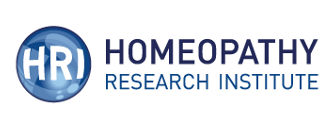HRI Online Programme
- 25/06/2022
hri ONLINE 2022
- 11.00 CEST
Welcome
Introduction and welcome to HRI Online 2022.

Dr Alexander Tournier
Switzerland

Rachel Roberts
United Kingdom
11.05
SESSION ONE
The landscape of homeopathy research
A brief introduction and overview of leading organisations in the homeopathy research sector.

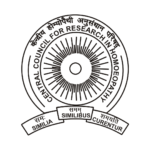
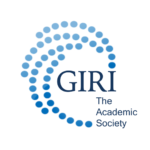
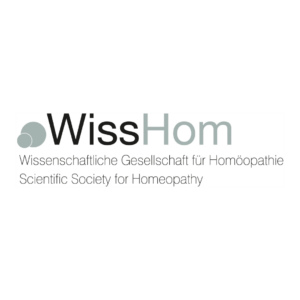
11:40
KEYNOTE PRESENTATION
Homeopathy versus Conventional medicine - can homeopathic paradigm equate the conventional paradigm in children?
Keynote presentation by Dr Menachem Oberbaum, Dr Anil Khurana and Dr Anupriya Chaudhary on a collaboration between Israeli and Indian colleagues to conduct a randomised controlled trial.
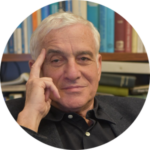
Dr Menachem Oberbaum
Israel

Dr Anil Khurana
India

Dr Anupriya Chaudhary
India
Abstract
Menachem Oberbaum¹, Anupriya Chaudhary², Anil Khurana²
¹The Center for Integrative Complementary Medicine, Shaare Zedek Medical Center, Jerusalem, Israel
²Central Council for Research in Homoeopathy, Ministry of AYUSH, New Delhi, India
Introduction
Acute respiratory diseases (ARD) and diarrhea are leading causes of morbidity and mortality in young children, both globally and particularly in low-income countries (LMICs), responsible for more than 1.6 million and 1.3 million deaths annually, respectively.
Antibiotic over-prescription in primary care for these common pediatric diseases not only causes antibiotic-resistant strains but also lowers vaccine induced immunity.
Homeopathy, a safe and cost-effective therapeutic intervention, can be an answer, provided it is proven effective compared with conventional medicine alone.
A first of its kind study was taken up comparing the morbidity and cost factor of two treatment paradigms in infants: homeopathic and conventional, in their first two years of life.
Methods
The study was a randomized, pragmatic comparative trial. Neonates of both genders were enrolled in the study and randomized to either homoeopathic (H) or conventional group (C). They received homeopathic or conventional treatment for any acute illness episodes during the 2 years study period based on their group allocation. Groups were primarily compared for the health status of the children measured by the “sum of sick days” over 2 years. Secondary outcomes included comparison of physical growth & development using anthropometry measures and Development Assessment Scale (DAS II) for Indian infants respectively and occurrence of diarrheas or respiratory infection episodes in the two groups. Use of antibiotics was also compared between the groups.
Results
108 neonates were enrolled, of which 99 (H=49; C=50) completed the study. Children in the homoeopathic group had significantly lesser sick days (H= 1.17 days, 95% CI: 0.47-2.90 and C= 9.78 days, 95% CI: 4.91-19.48; p= .003) as compared to the conventional group. Significantly less episodes of illness were recorded in homoeopathy group (H= 94, C=187). Antibiotics were prescribed for 141 episodes in the conventional group in contrast to 14 episodes in its counterpart. Episodes and duration of respiratory diseases were also significantly lower in the homeopathic group. (H= 0.38 days, 95% CI: 0.15-1.03 and C= 4.89 days, 95% CI: 2.21-10.87; p= .0001). Growth & development in children of both the groups was at par with their age.
12.25
Break
12.45
SESSION TWO
Scientific standards in homeopathy research - Context is everything

Rachel Roberts
United Kingdom
Abstract
E. Rachel Roberts, Angelina J. Mosley
Homeopathy Research Institute, London, United Kingdom
In many countries, homeopathy is widely accepted as one of several healthcare treatment options made available to the population, alongside conventional medicine and other forms of traditional and integrative medicine. By contrast, in other regions homeopathy remains a controversial topic, with ongoing debate within academic circles and beyond, regarding the quality and status of scientific research in the field.
In March 2022, this debate was reignited by publication of an article in which the authors – Gartlehner et al. – claim to have identified “shockingly poor scientific standards” in homeopathy research. This study, being published in the prestigious journal BMJ Evidence Based Medicine, understandably triggered media headlines. Yet, contrary to the authors’ claims, their own results actually show homeopathy research to be outperforming conventional medical research in terms of the scientific standards assessed by this Austrian team.
In this presentation, a brief overview and analysis will demonstrate how, when Gartlehner’s findings are put into the appropriate context (comparing homeopathy research with medical research as a whole) their “shocking” conclusion is reversed.
13.10
Research without compromise: Clinical trials which preserve the integrity of homeopathic prescribing

Dr Esther van der Werf
United Kingdom
Abstract
Dr Esther T. van der Werf
Homeopathy Research Institute, London, United Kingdom
Study design should be well thought of before initiating a research investigation. Choosing an inappropriate study design may undermine overall study validity and will influence the level of evidence granted which is being used to aid clinicians in practicing evidence-based medicine. Randomised controlled trials (RCTs) are still considered the gold standard of study design.
Clinical trial methodology is easiest to apply if there is one treatment for a given disease which is rarely the case in homeopathy. The main challenge in designing clinical trials of homeopathy is incorporating the element of ‘individualisation’ that is essential to certain techniques such as ‘classical’ homeopathic prescribing. Moreover, good clinical homeopathic practice does not treat disease based solely on the primary diagnosis; rather prescriptions are based on the whole ‘clinical picture’, including symptoms occurring across multiple body systems simultaneously. Though generally welcomed by patients, this individualised totality approach creates difficulties for scientists trying to study homeopathy using the highest-quality rated study designs.
However, investigating the efficacy and effectiveness of homeopathy without compromising the integrity of homeopathic prescribing is not impossible. This will be demonstrated by presentation of an overview of high-quality RCTs on individualised homeopathy (IH) and non-individualised homeopathy (non-IH) in human and veterinary research. In addition to discussion of the study results, the strengths and limitations of the study will be examined.
13.35
Mainstreaming homeopathic provings as clinical trials: experiences with South African regulatory bodies
Prof Ashley Ross describes his experiences in conducting novel research and introduces key research groups in South Africa.

Prof Ashley Ross
South Africa
Abstract
Prof. Ashley H A Ross
Durban University of Technology, Durban, South Africa
The LMHI-ECH Homeopathic Proving Guidelines (2014) were developed as a deliberate resolution by the respective international groupings to promote a single reference text that summarises current best-practice in proving methodology. The Guidelines were envisaged to serve homeopathic researchers wishing to conduct homoeopathic provings within an increasingly regulated environment, but were also crafted to serve as a specific reference text for regulators, ethical review boards and journal editors.
Within the context of a spearheading of proving research and the evolution of proving methodology spanning nearly 25 years, the Durban University of Technology (DUT) has conducted 36 double-blind placebo-controlled provings of new simplex remedies, either within the context of Masters level research or within a formal research collaboration with a single multinational sponsor. Historically, all DUT provings have been closely aligned to the Guidelines, and have routinely been submitted for review by an institutional research ethics committee. However, legislative changes to the definition of a medicine arising in 2013 have exerted unavoidable pressure on previously university-managed DUT provings to be defined in terms of mainstream clinical trial methodology, the dictates of both International Committee for Harmonisation (ICH)- and South African (SA) Good Clinical Practice Guidelines, and to be subjected to the formal review processes for approval by the Clinical Trials Committee of the South African Health Products Regulatory Authority (SAHPRA).
In this paper, the researcher will describe the benefits and challenges of resolving the inherent ethical challenges of proving research, the most recent challenges of framing a fundamentally qualitative clinical experiment as a quasi-Phase 1 clinical trial to regulatory authorities ingrained in a mainstream paradigm, skepticism of CAM research in general, and no prior experience of homeopathic proving methodology, and the lessons learnt in negotiating previously unchartered waters.
14.00
Lunch break
15.00
SESSION THREE
Clificol - A key collaboration in data collection
Dr Alexander Tournier and Aaron Ka Lun To give an insight into the Clificol data collection project, highlighting the importance of data collection and its value to the homeopathy evidence base.

Dr Alexander Tournier
Switzerland

Aaron Ka Lun To
Hong Kong

Dr Yvonne Fok
Hong Kong
Abstract
Alexander Louis Tournier1,2 Yuen Ying Yvonne Fok³, Aaron To³
¹Homeopathy Research Institute, London
²Institute of Complementary and Integrative Medicine, Faculty of Medicine, University of Bern, Bern, Switzerland.
³Hong Kong Association of Homeopathy
Background: The Clificol® COVID-19 Support Project is an innovative international data collection project aimed at documenting the presenting symptoms, use of homeopathy through the pandemic and tackling some of the core questions in homeopathy.
Aims: First, we wanted to investigate the concept of the Genus Epidemicus, central to the understanding of epidemics from the homeopathic point of view. Secondly, we aimed to characterise the recent Omicron wave in Hong-Kong and to get an overall picture of the global pandemic as experienced by the homeopathic community.
Methodology: Clificol is an online multi-national data-collection project supported by the ECH, ECCH, ICH, HRI, LMHI, and other professional associations. Collected data includes demographic information, severity, conventional diagnosis and treatment, presenting symptoms as well as the remedies prescribed. Treatment outcome was tracked using the Outcome Related to Impact on Daily Living (ORIDL) scale.
Results and discussion:
During the initial wave, 20 Chinese practitioners collected 359 cases, primarily in the first half of 2020 (766 consultations, 363 prescriptions). A cluster analysis identified two symptomatic clusters, which had a high overlap with the two most commonly prescribed remedies in that population (Cluster 1: 95.6% of prescriptions of Gelsemium sempervirens, Cluster 2: 95.1% of Bryonia alba).
Cases collected from around the world during the pandemic (N=1700) were analysed, providing an overall picture of the pandemic and its specificities per country and over time.
The recent wave of the Omicron variant in Hong-Kong, was analysed (N=372 cases from 21 practitioners) in terms of its symptomatology. Clinical rubrics were collected using a questionnaire (171 items) reporting on 155 rubrics relevant for this wave.
Conclusions: Clificol is demonstrating the value of data collection for the homeopathy community, providing important information for the management of future pandemics and opening new avenues for research in homeopathy.
15.25
The practitioner as a researcher: not only possible, but necessary
Dr Robbert van Haselen gives an insight into current data collection projects and explains how practitioner involvement can demonstrate the value of homeopathy.

Dr Robbert van Haselen
United Kingdom
Abstract
Robbert van Haselen
International Institute for Integrated Medicine, Kingston, UK
Background: The gap between research and practice is well documented. Even in the presence of good quality evidence, practitioners do no necessarily act on this. Whilst research is considered to be important, practitioners often do not consider it to be relevant in practice. The latter contributes to a perceived gap between ‘research’ and ‘practice’.
Aims: To demonstrate that ‘being a practitioner’ is entirely compatible with ‘being a scientist’. To explain why the integration of research and practice is important, and how the gap between both can be bridged.
Method / Approach: The gap between research and practice is a complicated and persistent problem in medicine in general. Apart from the perceived low relevance of research findings, decision-making biases are playing an important role. Reducing this gap therefore requires A) increasing the relevance of research and B) reducing decision-making biases.
Outcomes: An overview of ‘practitioner-relevant’ research designs will be given, including high quality clinical case reports, case registries and prognostic factor research. Furthermore, the main decision-making biases affecting decision-making in clinical practice will be discussed. The scientific method, as a means of reducing bias, should not only inform the chosen research design, but also optimise decision-making by the homeopathic practitioner. Improving the quality of decision-making therefore requires the application of the scientific principles in daily practice. Some pointers to how the latter can be achieved will be given.
Conclusions: Bridging the gap between ‘research’ and ‘practice’ is essential for improving the success of homeopathy.
15.50
Experiences from decades at the forefront of integrative oncology
Prof Michael Frass presents insights from his many years’ experience in integrative oncology.

Prof Michael Frass
Austria
Abstract
Michael Frass
Medical University of Vienna, MedUni Vienna, Department of Medicine, MD, Professor of Medicine
In an open study, we investigated the influence of additive classical homeopathy on global health status and subjective well-being in cancer patients as well as side effects by means of questionnaires. 410 patients received either one or no additional homeopathic therapy in addition to standard cancer therapy in this pragmatic randomized controlled study.
Two questionnaires were completed by patients before the first interview and at each visit. The improvement in global health status between the first and third visit was significantly greater in the homeopathy group (p = 0.005) than in the control group. A significant improvement was also found in subjective well-being in favor of the homeopathy group (p < 0.001).
In a retrospective study, we present an analysis of data from homeopathic patients compared to control patients from the same outpatient clinic. For patients suffering from advanced stages of cancer and surviving the first 6 or 12 months after diagnosis, the results show that the additional use of homeopathy gives a statistically significant (p <0.001) advantage over control patients in terms of survival.
A recent study examined patients with advanced non-small cell lung cancer (NSCLC) with regard to quality of life and survival time with additional homeopathy. The patients were divided into 2 groups, and received double-blind homeopathy or a placebo, a 3rd group was studied only as a control without any homeopathic accompaniment. The patients with homeopathy showed improved quality of life as well as improved subjective feeling, further chronic fatigue, nausea, vomiting, shortness of breath, insomnia, loss of appetite, pain and shortness of breath. Even surprisingly for the authors of the study, longer survival time was also shown in the homeopathic patients compared to the placebo and control patients. Homeopathy is perfectly compatible with conventional therapy!
16.15
Break
16.35
SESSION FOUR
An evolution of homeopathic basic research models at the University of Bern
Dr Stephan Baumgartner and Dr Alexander Tournier present work being carried out at the University of Bern, at the forefront of basic research in homeopathy.

Dr Stephan Baumgartner
Switzerland

Dr Alexander Tournier
Switzerland
The evolution of homeopathic basic research models at the University of Bern
Stephan Baumgartner1,2,3 Alexander Tournier1,3,4
¹Institute of Complementary and Integrative Medicine, University of Bern, Switzerland
²Society for Cancer Research, Arlesheim, Switzerland
3Institute of Integrative Medicine, University of Witten/Herdecke, Germany
4Homeopathy Research Institute, London, UK
Following the foundation of the Institute for Complementary and Integrative Medicine at Bern university in 1995, we started to develop preclinical assays for basic research into homeopathic potentization. Over the last 25 years, we have evaluated around 20 experimental models in terms of their suitability for homeopathic basic research, specifically focusing on in vitro models, whole plant bioassays and phytopathological assays. When developing these experimental set-ups, a strong focus was set on a thorough methodology. Our key learnings can be summarized as follows:
- In many models we observed solid empirical evidence for specific effects of homeopathic preparations against placebo.
- Effects of homeopathic preparations seemed to be larger for complex models and rather small for in vitro assays with single cell organisms.
- In all responsive models, we observed evidence for a strongly nonlinear relationship between effect size and potency level.
Overall, our results are not compatible with the notion that the homeopathic potentization procedure generates inert preparations without specific effects, i.e. that homeopathic remedies are identical to placebo. This then begs the question how such effects can be understood in terms of basic physical principles.
With this in mind, we undertook a series of reviews of the physicochemical investigations of homeopathic preparations. We were thus able to determine the most promising techniques for future investigations in physicochemical research. This process also started putting constraints on eligible theories, thus reducing the number of theories under investigation, and focusing the elaboration of new theories. The aim being to test these theories experimentally.
Such experimental investigations – using Nuclear Magnetic Resonance and Spectroscopy – are currently on-going in the lab. Also, a review of the theories of the mode of action of homeopathy is in progress, thus creating a basis for further theoretical exploration. Such projects hold the promise of generating much needed answers in the field of homeopathy basic research.
17.10
Homeopathy research in Brazil - 25 years of progress
Learn from the experiences of leading researchers in homeopathy research in Brazil – Prof Leoni Bonamin and Prof Carla Holandino.

Prof Leoni Bonamin
Brazil

Prof Carla Holandino
Brazil
Abstract
Leoni Villano Bonamin, DVM, Ph.D¹, Carla Holandino Pharm, Ph.D²
¹Paulista University, São Paulo, Brazil. Graduate Program of Environmental and Experimental Pathology.
²Federal University of Rio de Janeiro, Pharmacy College, Rio de Janeiro, Brazil.
Homeopathy research is continually developing at an international level. Today, more than 6200 articles are found in PubMed database when using the search term “homeopathy”. A significant percentage of studies about homeopathy, mainly in basic research, are performed in Brazilian Universities.
Herein an overview about the recent studies that have been performed by Brazilian groups in the field of basic research is shown. Thus, a summary of the researchers’ profiles and the progress achieved is revealed. Studies about the physicochemical features of homeopathic preparations, including interaction of homeopathic potencies with solvatochromic dyes, enthalpy variation and changes on crystalline properties of dynamized solid mixtures, have been described. The latter is a sensitive tool for improving the understanding of triturated samples.
Additionally, Brazil has traditionally been a home for nosodes research, in which different microorganisms, such as, Candida albicans, influenza virus, Leishmania infantum, and Trypanosoma cruzi are used as starting point of ultra-diluting process. The results show nosodes’ influence in the immunological balance according to the homeopathic potency. Important mechanisms related to anticancer potential of homeopathic complexes (M1 and M8) were described in vitro and in vivo, with a particular reduction of tumor mass and metastatic process after homeopathic inhalation by melanoma bearing mice. Moreover, the use of homeopathic treatment as Phyto and Zoo-technical tools have interesting implications to preservation of the environment, and they will also be highlighted in this presentation.
To conclude, Brazilian researchers have strongly contributed to basic research on homeopathy for the past decade. The physical and biological features of homeopathic phenomenon have been described, with some indications of medical and technological use based on putative cell signaling pathways and related physicochemical mechanisms.
17.50
CONCLUSION
Closing ceremony
Closing words and summary from Dr Alexander Tournier and Rachel Roberts.

